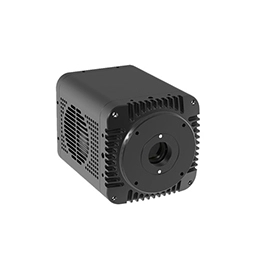In the electromagnetic spectrum, infrared rays are located between visible light and microwaves. The infrared wavelength has a wide range of 750nm to 14,000nm. It is usually divided into near infrared (NIR), short wave infrared (SWIR), medium wave infrared (MWIR) and long wave infrared (LWIR). Although infrared radiation in the short wave infrared band is invisible to the human eye, the way short wave infrared radiation interacts with objects is similar to visible wavelengths.
Most short wave IR camera sensors such as the semiconductor camera are based on InGaAs materials. They work in the same way as silicon-based CCD or sensors CMOS by converting photons into electrons, so they are called quantum detectors.
1. The influence of dark current on image quality
When there is no light, the current flowing in the sensor is called dark current (such as signal generation). It is caused by the thermal excitation effect of the electrons in the InGaAs material. The absolute value of the dark current between different sensors may vary greatly. The higher the sensor temperature is, the greater the dark current will be. According to experience, its absolute value doubles every time when the temperature rises by 9°C.
For example, using the same short wave infrared camera to take the same photo at 20°C and 45 sensor temperature, the histogram will show very different results. At 45°C, the minimum value is higher (0 is black, 255 is white), and so is the average value. At 20°C, there are no saturated pixels (maximum 254), while at 45°C there are quite a few saturated pixels.
2. The influence of temperature on spectral sensitivity
The temperature of the sensor also has a great influence on the spectral sensitivity of the short wave IR camera. When the sensor temperature drops by 40°C (from 25°C to -15°C), it will cause the spectral sensitivity to shift to low wavelengths by approximately 25nm. This may be critical for applications operating at the low or high end of the sensitivity curve. When the sensitivity is higher than 1.700 nm, the sensor temperature of the extended ingaas camera should not be too low (below 20°C). Although the dark current (and noise) increases with temperature, the signal at the high end of the spectrum may be better.
3. Sensor temperature control is essential
The temperature level affects the spectral sensitivity and dark current. Dark current has a great influence on image quality (black level and noise). For applications that require high image quality, when operating at the low or high end of the sensitivity curve, temperature control is critical.



